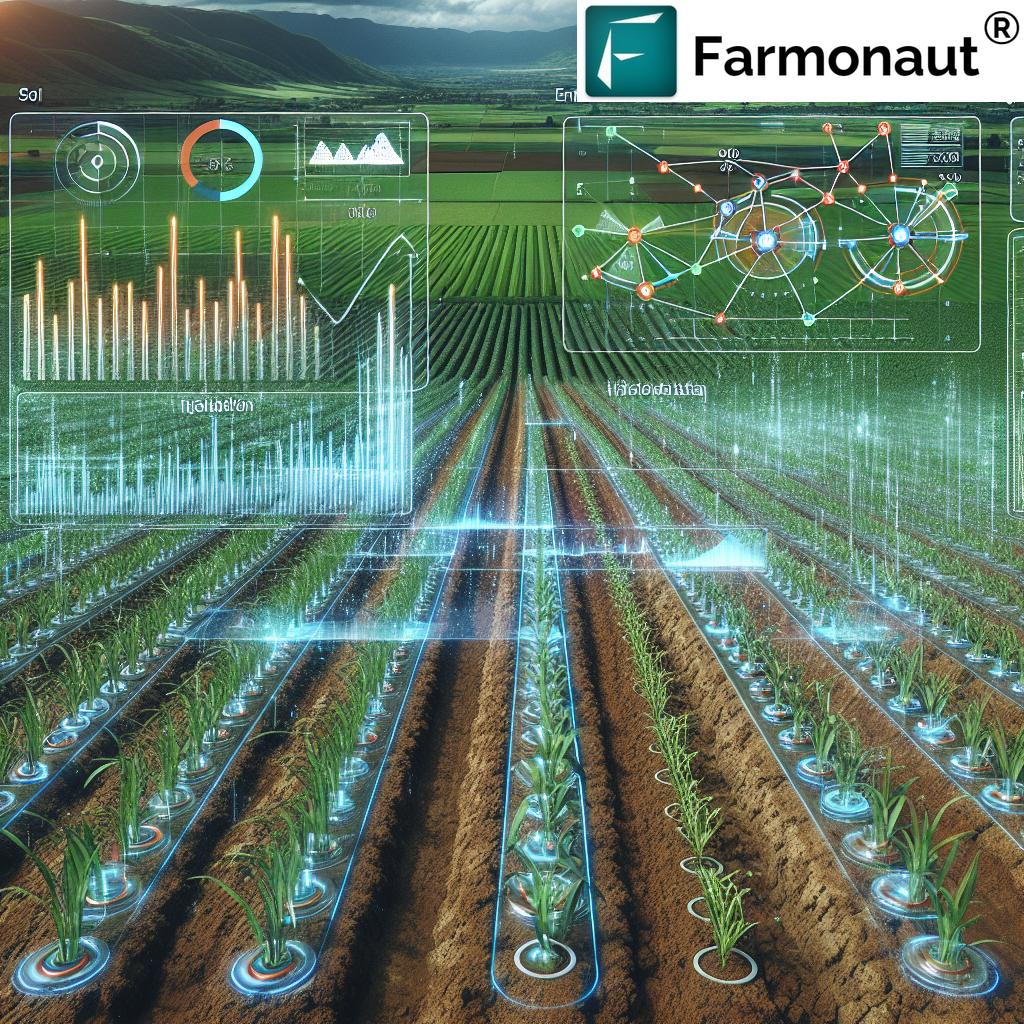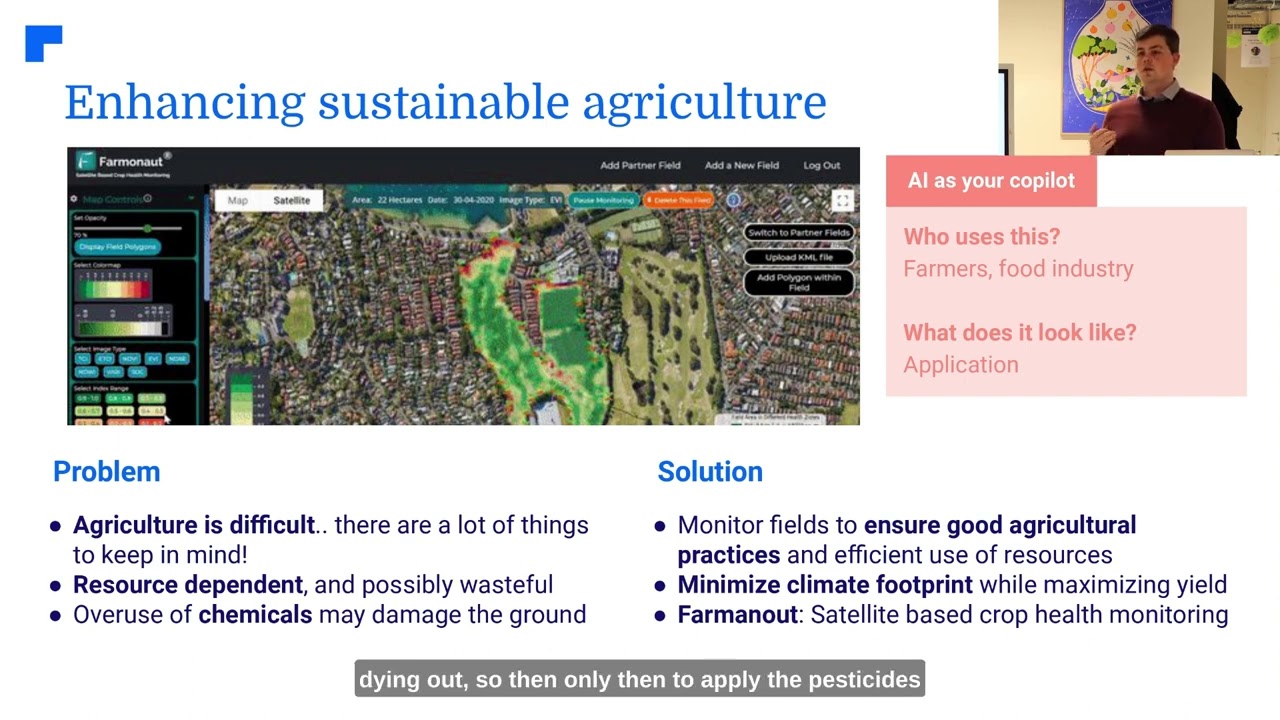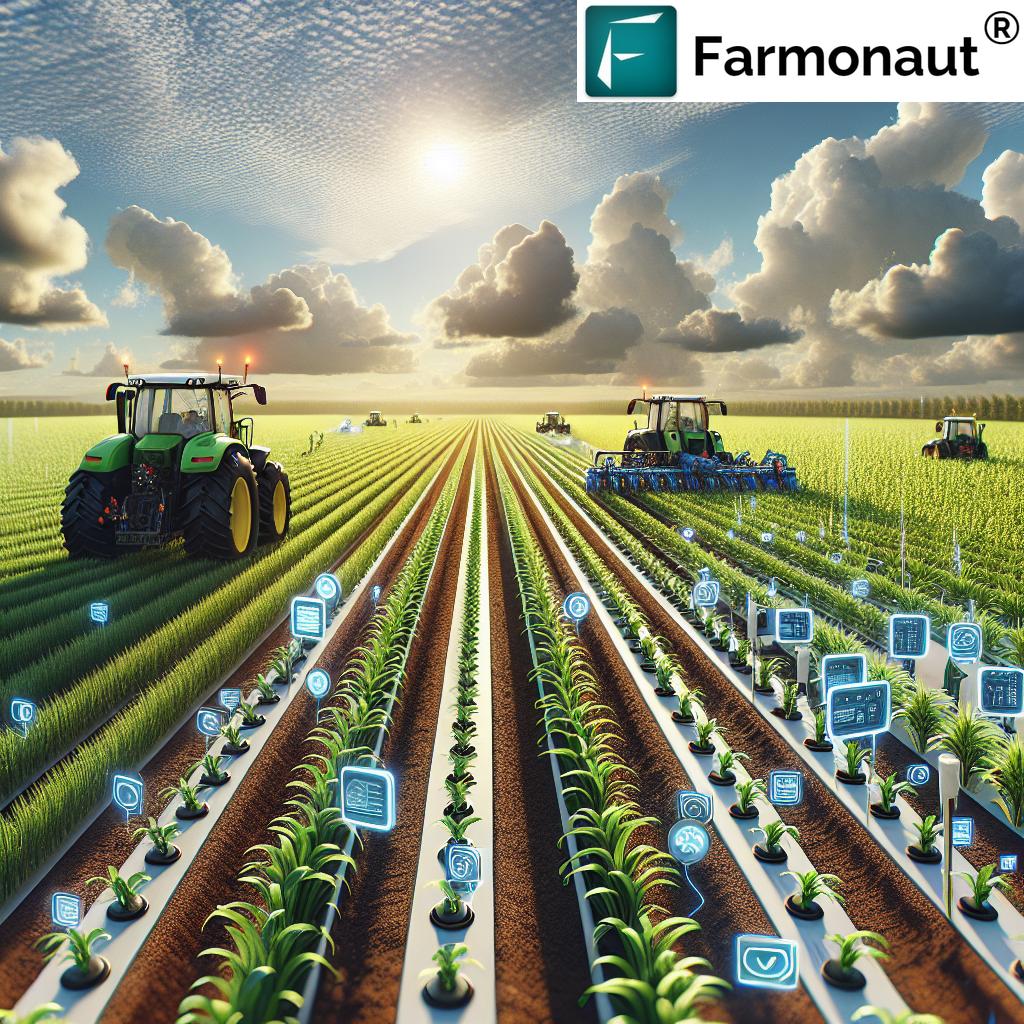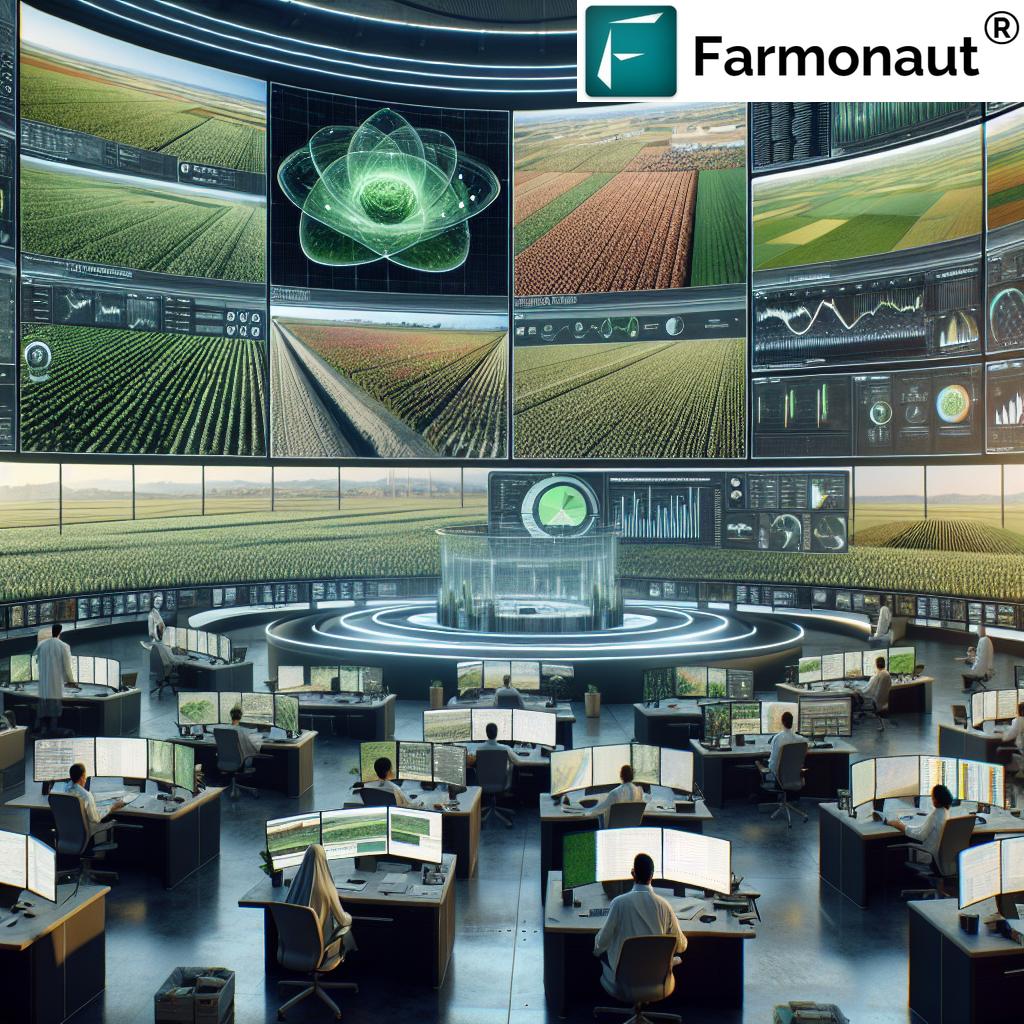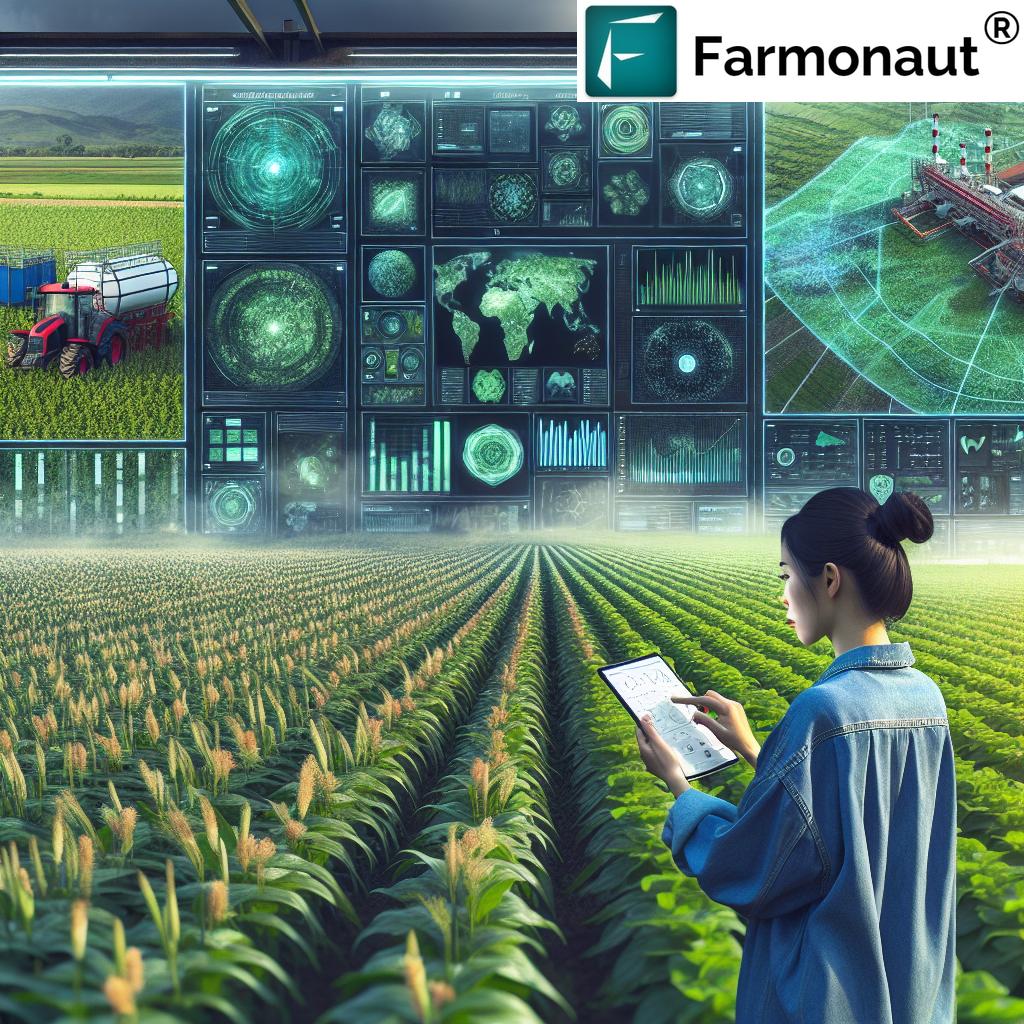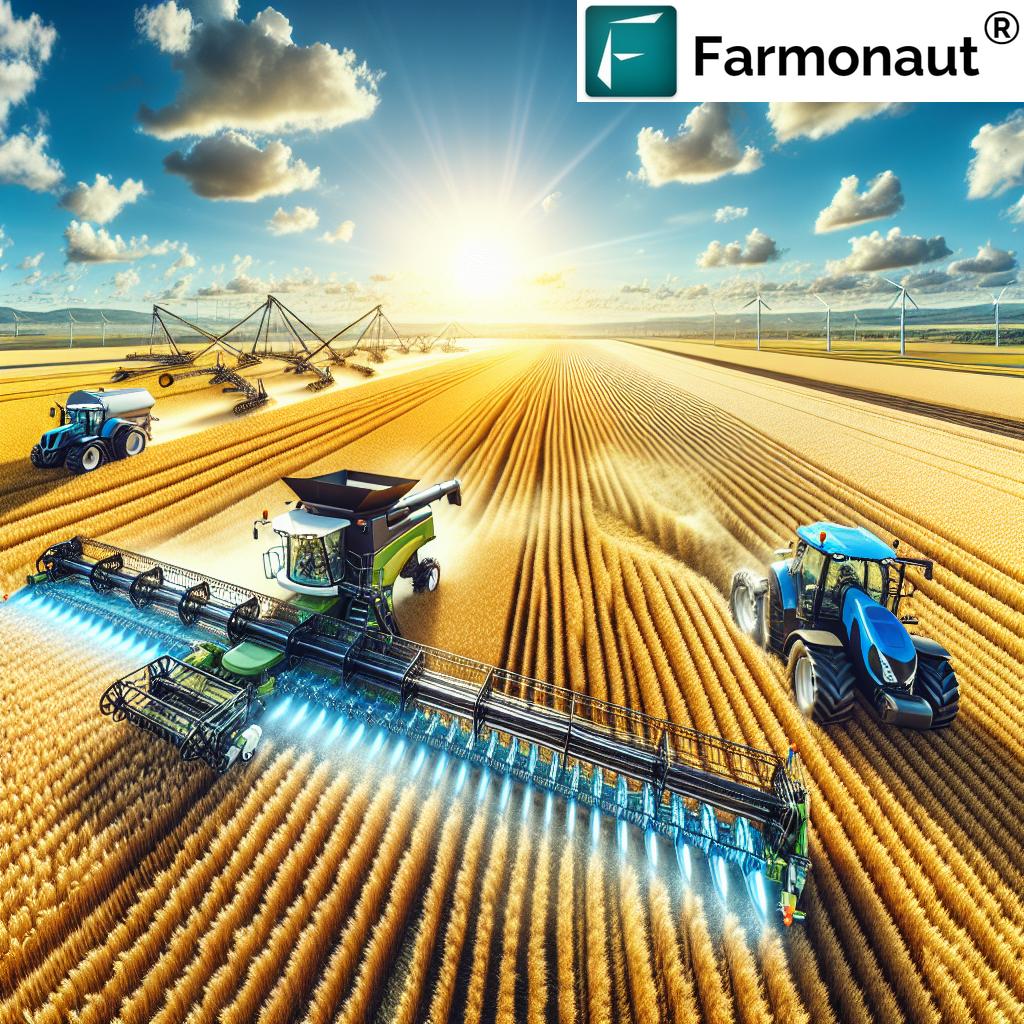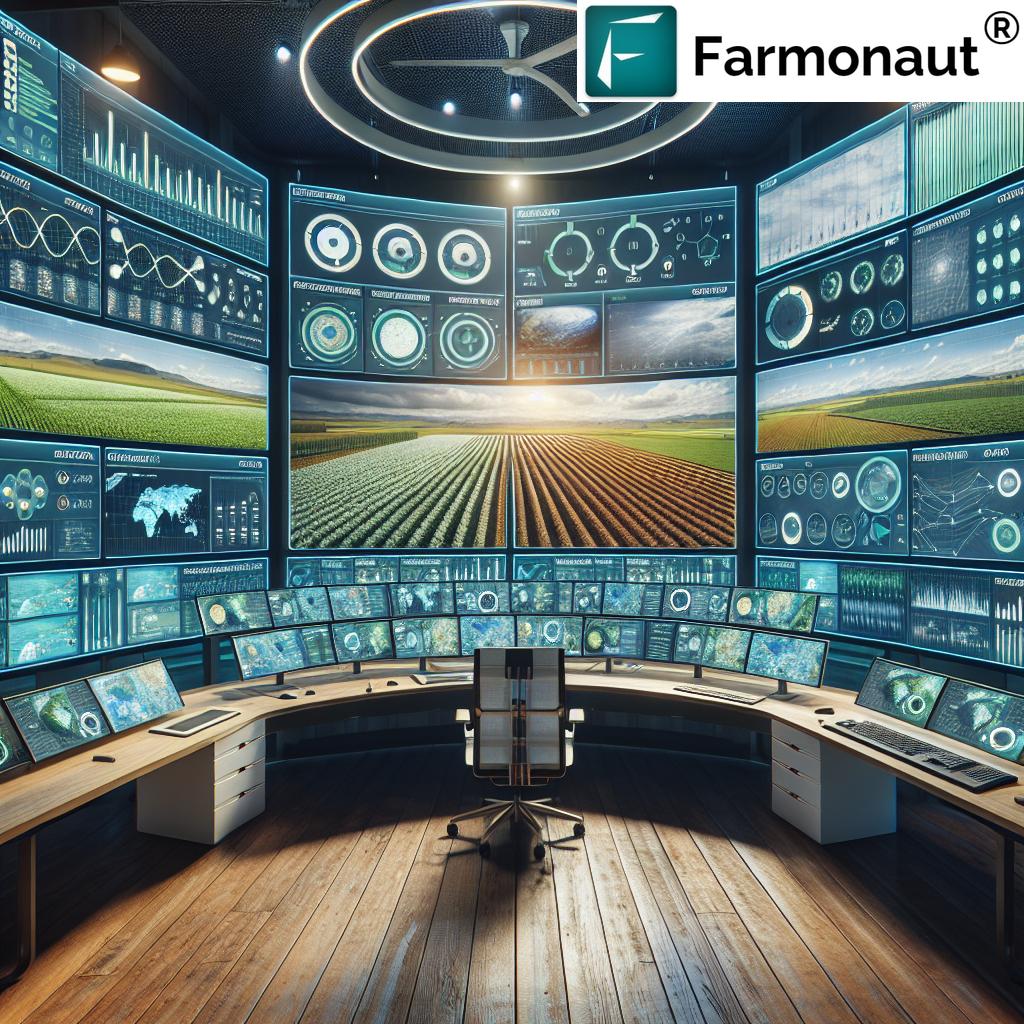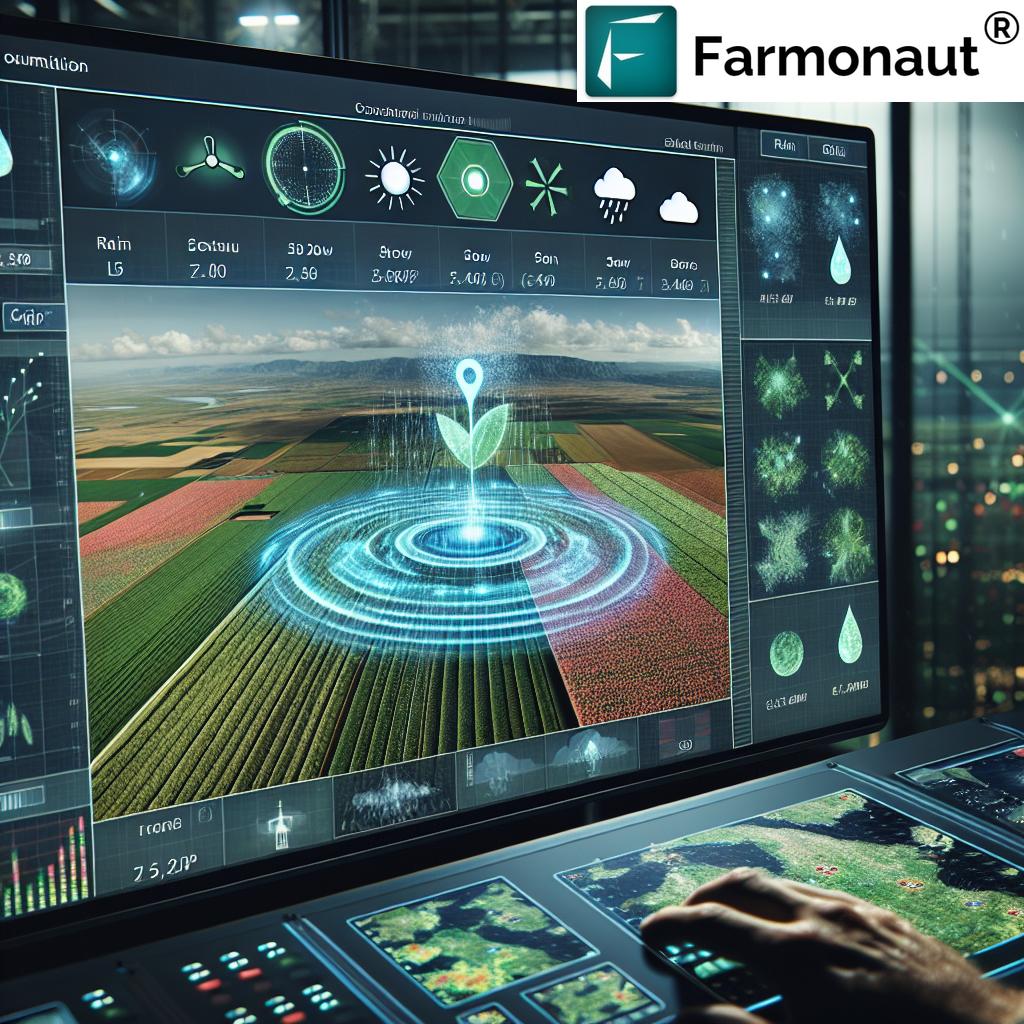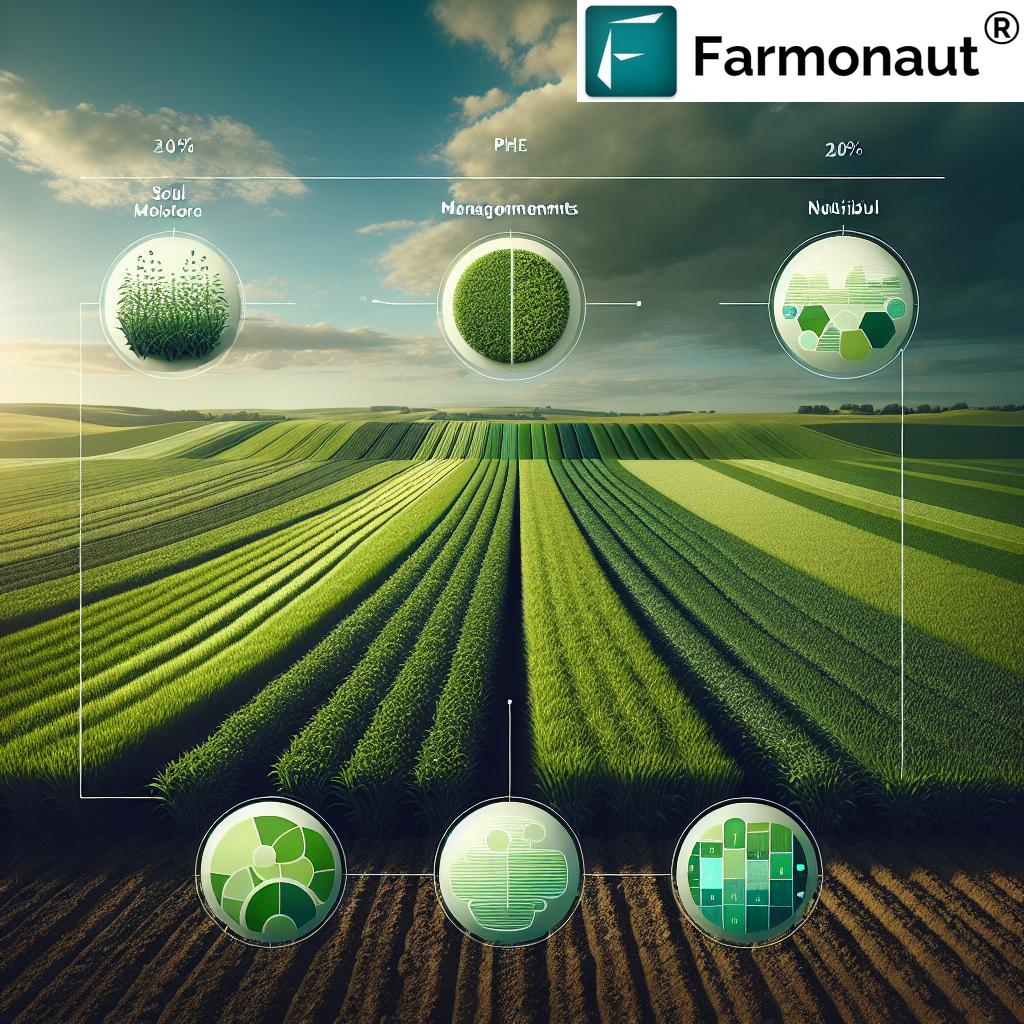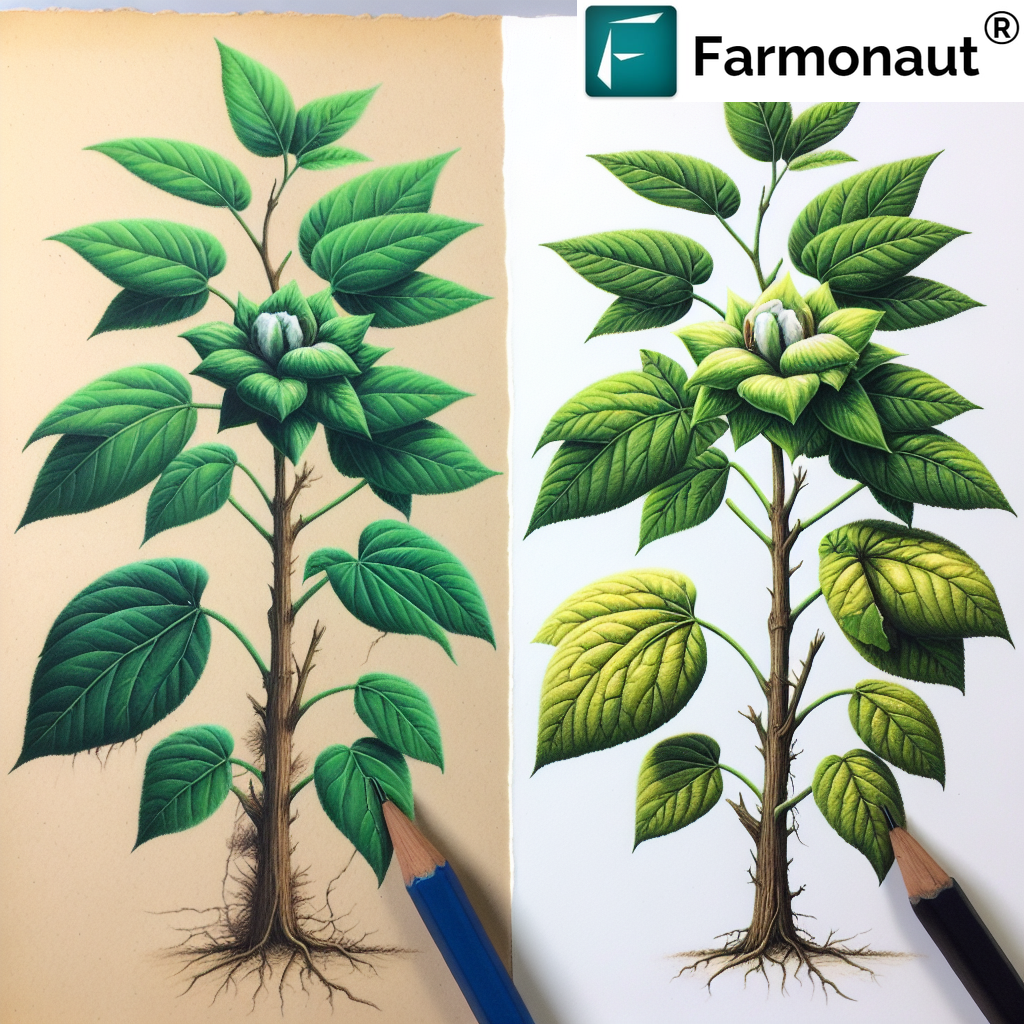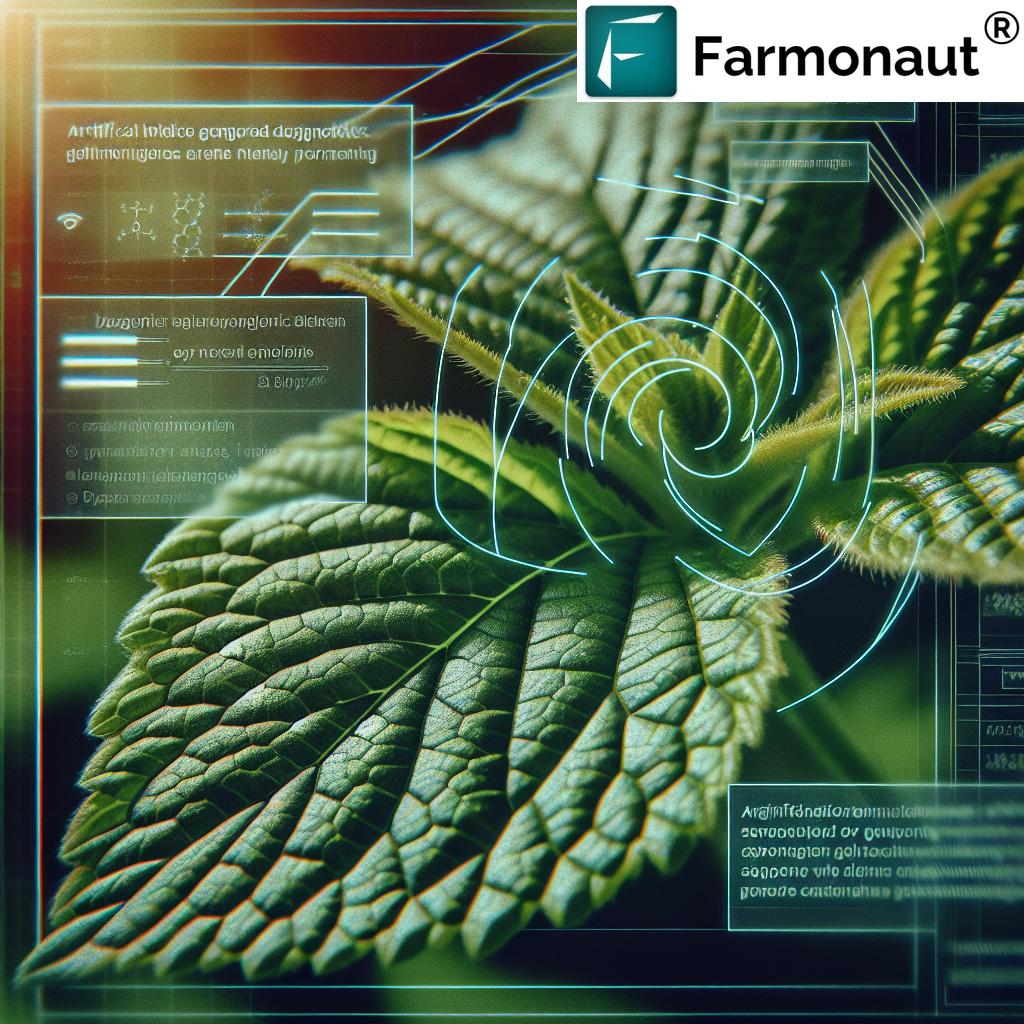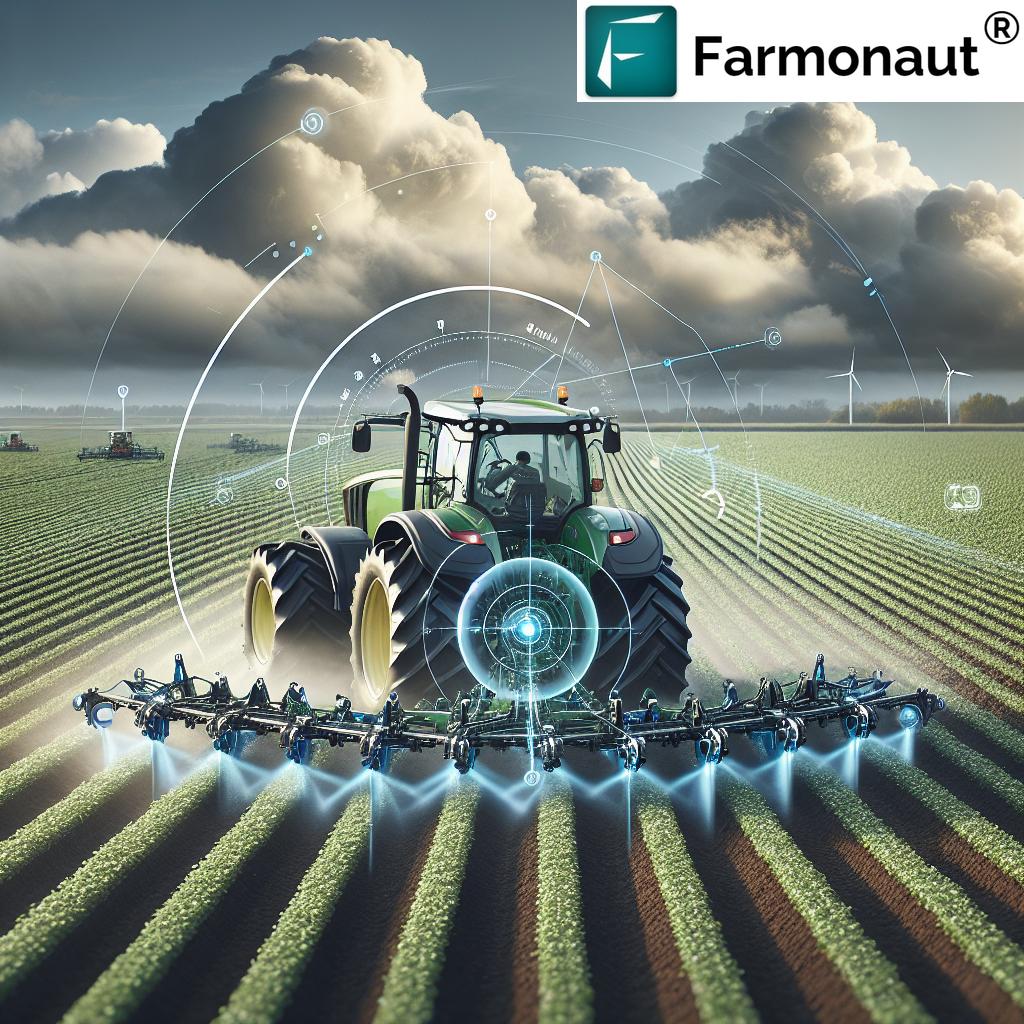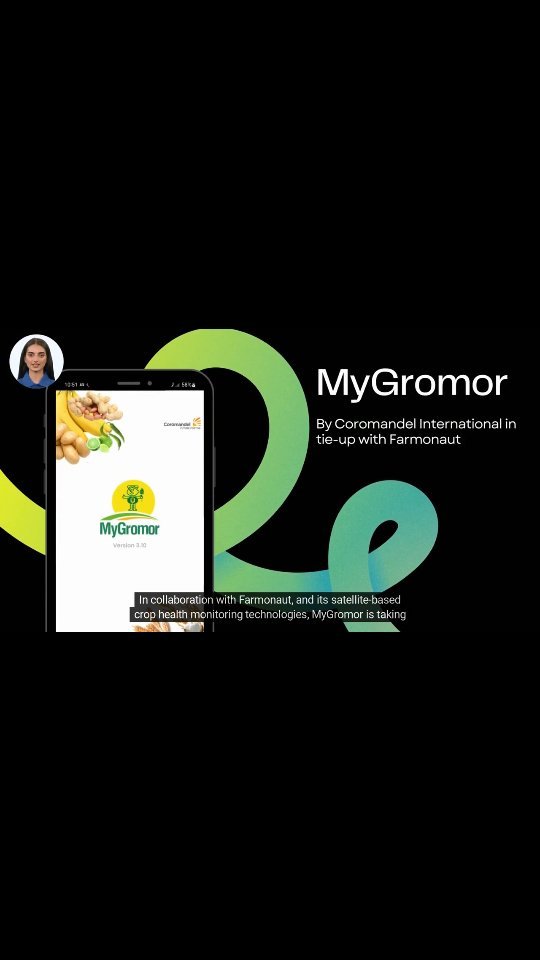Yield Prediction: 7 Technologies Transforming Farming
Introduction: The Critical Role of Yield Prediction
Yield prediction in agriculture is now at the heart of modern food production, farming, and forestry. As global populations rise and climate variability intensifies, accurate yield predictions have become indispensable for ensuring food security, optimizing resource utilization, and enhancing economic stability. From estimating the yields of grains and fruits to forecasting timber production in forestry, advanced technologies are revolutionizing how stakeholders anticipate outcomes and shape decision-making processes.
In this comprehensive guide, we’ll explore how cutting-edge yield prediction technologies—from remote sensing and IoT sensors to machine learning models—are transforming agricultural production planning and forest management worldwide. Along the way, we’ll cover traditional methods, real-world challenges, and the next wave of innovations shaping crop yield forecasting and resource management for the 21st century.
Understanding Yield Prediction in Agriculture & Forestry
Yield prediction is the process of estimating the quantity of produce (such as grains, fruits, or timber) harvested from a particular area of land within a specified time frame. This complex task lies at the intersection of crop genetics, environmental factors such as soil health and weather patterns, and management practices. The primary goal is to anticipate yields with maximum accuracy, enabling farmers, foresters, agribusinesses, and policymakers to:
- Facilitate effective planning and planting decisions
- Optimize resource allocation (water, fertilizer, labor)
- Support risk assessment and economic strategies
- Maintain food security and market stability
Modern yield prediction in agriculture integrates real-time data streams, advanced models, and precision technologies to assess plant health, monitor soil moisture, understand historical trends, and project future outcomes.
“Over 80% of modern farms use satellite data and AI models for accurate yield prediction and crop management.”
Traditional Methods of Yield Prediction: Foundation & Limitations
Historically, yield prediction relied on empirical methods, often based on historical yields, field observations, and weather records. Farmers and foresters would examine past crop performance, observe current conditions, and extrapolate based on weather patterns or regional averages. Common steps included:
- Assessing crop growth “stage” and historical yield books
- Using manual sampling techniques—estimating ears of corn per square meter, for example
- Tracking rainfall or soil moisture through simple tools
- Comparing against past outputs to “guesstimate” expected yields
While these traditional yield estimation methods provided a basic framework, they frequently fell short due to:
- The sheer complexity of environmental factors (droughts, floods, pest outbreaks, etc.)
- Lack of timely or granular data
- No ability to adjust dynamically as conditions changed throughout the season
As global food security and resource optimization demands rise, these legacy estimation techniques alone are no longer sufficient.
7 Technologies Transforming Yield Prediction in Agriculture & Forestry
The 21st century has ushered in a wave of technological advancements that have fundamentally reshaped how yield prediction is approached. Here, we break down the top seven technologies revolutionizing crop yield forecasting and yield estimation in forestry—each leveraging data-driven insights and sophisticated models for unprecedented accuracy.
1. Satellite Imagery & Remote Sensing for Yield Prediction
One of the most powerful tools in modern precision agriculture is satellite imagery combined with remote sensing. Advanced satellites use multi- and hyperspectral sensors to provide massive volumes of real-time data on:
- Crop health via NDVI (Normalized Difference Vegetation Index) and other vegetation indices
- Soil moisture and nutrient status
- Canopy cover and plant density
- Environmental anomalies or stress factors
- Large-scale land use and timber inventory in forestry
NDVI and other vegetation indices convert these satellite images into actionable analytics, enabling the detection of both large and subtle changes in plant health across vast areas. This bridges the gap between traditional field scouting and actionable, data-driven yield forecasts.
Use Case: Satellites scan every part of a country—from Midwest USA cornfields to Indian paddy fields or Europe’s timber forests—delivering unbiased yield prediction data at a scale and frequency never before possible.
Explore more about how satellite data drives resource management and traceability in agriculture on our Product Traceability page.
2. Drones: Precision Aerial Imaging for Crop Yield Forecasting
Drones (UAVs) have dramatically improved the spatial resolution of on-farm yield estimation. By flying low and capturing high-resolution images and multispectral data, drones excel at:
- Identifying nutrient deficiencies, pest or disease stress, and irrigation needs
- Spot-detecting plant vigor variations across small plots
- Supporting variable rate application of fertilizers and pesticides
- Enhancing precision agriculture technologies for smallholder farmers
Combined with ground-truthing and sophisticated data analytics, drones make yield prediction near real-time, cost-effective, and more precise than ever at the field scale.
Discover how drones and accurate field data empower large-scale farm management via our Large-Scale Farm Management solution.
3. Machine Learning in Crop Yield Estimation
Machine learning in crop yield estimation is a cornerstone of today’s advanced yield prediction models. These technologies ingest big datasets—including weather patterns, soil data, satellite images, and historical records—to build powerful, self-improving algorithms. Major highlights include:
- Use of neural networks (CNNs, RNNs, LSTMs) to model spatial and temporal dependencies in yield prediction (Research reference)
- Integration with cloud platforms to process massive datasets quickly
- Ability to rapidly adapt and improve as more data is collected through the season
Whether used for row crops, orchards, or timber stands, machine learning models consistently outperform traditional approaches in prediction accuracy and dynamic resource allocation.
4. IoT Sensors: Real-Time Crop and Soil Health Monitoring
The proliferation of IoT (Internet of Things) sensors has brought real-time data streams straight from the ground to the cloud. These devices actively monitor soil moisture, temperature, humidity, and nutrient concentrations, supporting ultra-dynamic, field-level yield prediction. Advantages encompass:
- Enabling site-specific irrigation and fertilizer management
- Triggering alerts for abnormal plant health or disease outbreaks
- Continuous yield estimation updates as environmental conditions change
- Direct support for smallholder and large-scale precision agriculture
IoT sensor data is frequently integrated with satellite and drone imagery for multi-source, cross-validated yield forecasts.
Unlock the full power of data-driven farming through Farmonaut’s Crop Plantation and Forest Advisory app, featuring actionable insights based on IoT, satellite, and AI technologies.
5. Blockchain-Based Traceability for Yield Verification
Blockchain technology supports end-to-end traceability and validation of yield prediction outcomes. By recording immutable transactions (for example, the origin, quantity, and condition of crops at harvest), blockchain helps to:
- Verify actual yields against predictions
- Support insurance claim validation and reduce fraud
- Ensure transparency and trust in agricultural supply chains
- Empower consumers and buyers to access verifiable food provenance data
Yield data on blockchain fortifies both regulatory and commercial reporting—an increasingly important component in global food security and market systems.
Learn how blockchain technology enhances transparency and authenticity for agribusiness supply chains through Farmonaut’s Product Traceability offering.
6. Big Data Integration & Data Fusion
Advanced data integration platforms can now fuse datasets from satellites, drones, IoT sensors, public weather stations, and historical records into a single, harmonized view. This data fusion supports:
- Multi-layered prediction models that weigh environmental, genetic, and management factors
- Realtime updates and “nowcasting” capabilities for ongoing operations
- Broader spatial coverage and reduced error margins in yield estimation
With scalable cloud infrastructure, even national and global crop yield forecasting is achievable.
Curious about integrating satellite and weather data into your own systems? Explore the Farmonaut API and Developer Documentation
7. Advanced Climate & Weather Forecast Models
Today’s yield prediction frameworks lean heavily on improved weather and climate models. These advanced systems integrate historical patterns, real-time weather data, and even future climate scenarios to better:
- Estimate risk for weather-induced yield loss (drought, flood, heatwaves, cold snaps)
- Allow farmers to optimize planting times and management strategies
- Improve timber harvesting schedules in forestry
- Inform policy and food security planning at regional or country levels
By coupling environmental intelligence with market and operational data, these models deliver holistic predictions that benefit all agricultural and forestry stakeholders.
Comparison Table: 7 Yield Prediction Technologies
| Technology Name | Core Principle | Estimated Accuracy Improvement (%) | Typical Data Sources | Primary Crop Applications | Cost Range (USD/ha) | Notable Benefits |
|---|---|---|---|---|---|---|
| Satellite Imagery & Remote Sensing | Multi/hyperspectral scanning, vegetation indices (e.g., NDVI) for health assessment | 15–40% | Satellites, remote sensing archives | Cereals, oilseeds, rice, sugarcane, timber | 1–5 | Large-scale coverage, routine monitoring, early stress detection |
| Drones | Low-altitude aerial imaging, multispectral/thermal cameras | 10–30% | Drone imagery, ground-truthing | Fruits, vegetables, specialty/niche crops | 5–30 | High resolution, spot interventions, small plot accuracy |
| Machine Learning & AI | Neural networks, big data analytics, adaptive training | 20–35% | Weather, soil, historical yields, images, sensors | All field crops, orchards, forestry | 5–20 | Dynamic learning, predictive accuracy, scenario simulation |
| IoT Sensors | Ground-level sensing: soil, climate, plant metrics | 12–25% | In-field probes, remote telemetry | Row crops, orchards, greenhouses | 5–50 | Real-time feedback, site-specific management |
| Blockchain Traceability | Immutable record-keeping, supply chain validation | Supports data reliability (5–15%) | Yield logs, transport & sales chain | Grains, produce, timber, specialty crops | 2–10 | Transparency, fraud reduction, supply verification |
| Big Data Integration & Fusion | Combining multi-source datasets (satellite, IoT, weather) | 20–40% | All technologies above | Broad: cereal, oilseed, root, fiber, timber | 10–30 | Error reduction, holistic insights, scaling |
| Advanced Climate & Weather Models | Forecasting variable conditions, risk mapping | 10–25% | Weather stations, climate datasets | All crops, forestry, rangelands | 1–10 | Risk mitigation, strategic planning, insurance support |
Applications of Yield Prediction in Agriculture and Forestry
Yield prediction technologies are rapidly transforming resource management, financial planning, supply chain optimization, and sustainability across multiple industries, especially in agriculture and forestry.
In Agriculture
- Data-driven resource management in agriculture: Real-time yield predictions help farmers optimize their use of water, fertilizer, and labor, directly lowering costs and supporting sustainable practices.
- Financial & risk planning: Accurate crop yield forecasting supports strategic purchasing, investment, and contract decisions for both farmers and agribusinesses.
- Supply chain and distribution: Reliable predictions align harvest supply with market demand, reducing waste and maximizing profitability.
- Insurance and loans: Yield data can be leveraged to secure better crop loans and insurance, with satellite-based verification (Farmonaut Crop Loan & Insurance).
In Forestry
- Sustainable timber harvesting: Anticipate optimal harvest times and methods to support ecological balance and biodiversity (Farmonaut Carbon Footprinting).
- Biodiversity and habitat monitoring: Ensure yield increases do not threaten rare or valuable species.
- Economic forecasting: Predict market supply and prices for timber and related commodities with greater confidence.
“Machine learning algorithms can improve crop yield forecasts by up to 30% compared to traditional estimation methods.”
Challenges in Modern Yield Prediction
Despite remarkable advances, yield prediction remains a challenging frontier. Key barriers include:
-
Data Quality & Integration:
Aggregating vast, disparate data sources (satellite, drone, IoT, historical) introduces issues of data consistency, format, and quality. Unclean or poorly integrated data can skew prediction models (source). -
Environmental & Weather Variability:
Unpredictable or extreme weather patterns—droughts, hailstorms, heatwaves—can swiftly change anticipated yields. Climate change exacerbates this uncertainty. -
Technological Accessibility:
In developing regions, access to advanced technologies and reliable data infrastructure is still limited due to high costs and low digital literacy. -
Model Interpretability:
Highly accurate machine learning models can be “black boxes,” making it difficult for farmers and advisors to trust or understand the factors driving predictions (source). -
Policy & Incentives:
The lack of strong policy or incentives for tech adoption can slow yield prediction technology uptake at broad scale.
Overcoming these challenges requires focus on continuous data quality checks, capacity building for end-users, and persistent investment in technology infrastructure.
Future Directions for Yield Prediction Excellence
The evolution of yield prediction in agriculture and forestry will be characterized by:
-
Data Fusion and Integration:
Blending all available data sources (satellite, IoT, drones, historical records, market data) into unified, robust prediction frameworks (research ref). -
Adaptive, Self-Improvable Models:
Models that dynamically evolve as more data is collected, improving accuracy and flexibility in response to shifting environmental factors. -
Easy-to-Use Mobile Platforms:
Robust, accessible tools (like Farmonaut’s App for Android, iOS, and Web) will democratize yield prediction, even for smallholder farmers, without requiring technical background. -
Policy and Research Incentives:
Increased policy support and funding for technology adoption, research, and infrastructure are needed to close the digital gap. -
Sustainability and Climate Adaptation:
Yield prediction will increasingly account for carbon footprinting, resource conservation, and resilience to climate change, as seen with solutions like Farmonaut’s Carbon Footprinting.
Farmonaut: Empowering Precision Yield Prediction
At Farmonaut, we are pioneering affordable, satellite-based farm management solutions to make precision agriculture technologies accessible to all. By merging satellite imagery, AI, blockchain traceability, and intuitive digital platforms, our goal is to bridge the gap between traditional methods and advanced, data-driven insights.
-
Real-Time Crop Health Monitoring:
Our platform offers up-to-date analytics on vegetation health (NDVI, other indices), soil moisture, and more, allowing farmers to optimize resources and proactively address threats. This substantially improves yield outcomes and resource allocation. -
AI-Based Jeevn Advisory:
The Jeevn AI system provides data-driven, personalized farm management strategies, analyzing satellite data and user inputs for precision decision-making. -
Blockchain Traceability & Transparency:
We enable traceability from farm to consumer, ensuring data authenticity, trust, and supporting yield verification for insurance and finance. -
Fleet & Resource Management Tools:
We help large and small agribusinesses to streamline logistics, vehicle usage, and operational efficiency. -
Carbon Footprinting:
Our platform allows for real-time emissions tracking, paving the way for sustainable and climate-resilient farming.
Try out our scalable solutions: from API integration (learn more here) to full-featured Android, iOS, and web apps for yield prediction, precision resource management, and sustainable agricultural planning.
Questions & Answers – Yield Prediction in Agriculture
What is yield prediction in agriculture?
Yield prediction in agriculture involves estimating the expected quantity of produce (grains, fruits, etc.) from a specific field or region, based on factors such as crop genetics, soil health, weather patterns, and management practices. This helps optimize resource utilization, planning, and ensures food security.
Which technologies most improve crop yield forecasting accuracy?
Satellite imagery & remote sensing, machine learning models, IoT sensors, drones, and big data integration offer the greatest improvements—delivering up to 40% better yield forecasts versus traditional manual methods.
How does NDVI work for yield prediction?
NDVI (Normalized Difference Vegetation Index) uses the differential reflectance of red and near-infrared light, captured by satellites or drones, to assess vegetation vigor and health—key parameters for yield prediction models.
Why is blockchain important for agricultural yield prediction?
Blockchain ensures transparency, traceability, and reliability of yield data—crucial for insurance, finance, supply chain trust, and fair trade in the global food system.
Can small farms benefit from precision yield technologies?
Yes. With affordable, cloud-based tools (like those from Farmonaut), even smallholder farms can now access high-quality data, real-time crop health monitoring, and actionable yield forecasts for informed decision-making.
What are the biggest challenges in accurate yield prediction?
Data quality and integration, unpredictable environmental conditions, limited access to advanced technology, and model interpretability remain core challenges, especially in developing regions.
Is there a way to integrate satellite weather data via API?
Absolutely. Farmonaut provides a robust API and developer docs for integrating satellite and weather data streams directly into farm management and yield prediction systems.
Conclusion: Tech, Insight, and the Future of Yield Prediction
In today’s connected, data-driven agricultural landscape, yield prediction has evolved from simple manual estimations to a complex science driven by satellite imagery, AI, IoT sensors, and advanced models. These innovations unlock better food security, resource optimization, and economic stability across the globe. By embracing these 7 transformative technologies, farmers, foresters, and agribusinesses can plan with confidence, enhance operational efficiency, and contribute to a more sustainable and resilient food system.
Affordable, scalable solutions like those offered by Farmonaut are bridging the gap between high-tech and accessible precision agriculture—making advanced yield prediction a reality for all.
Start predicting with precision—explore the latest in yield prediction in agriculture and forestry with Farmonaut for enhanced decision-making and a sustainable future!




